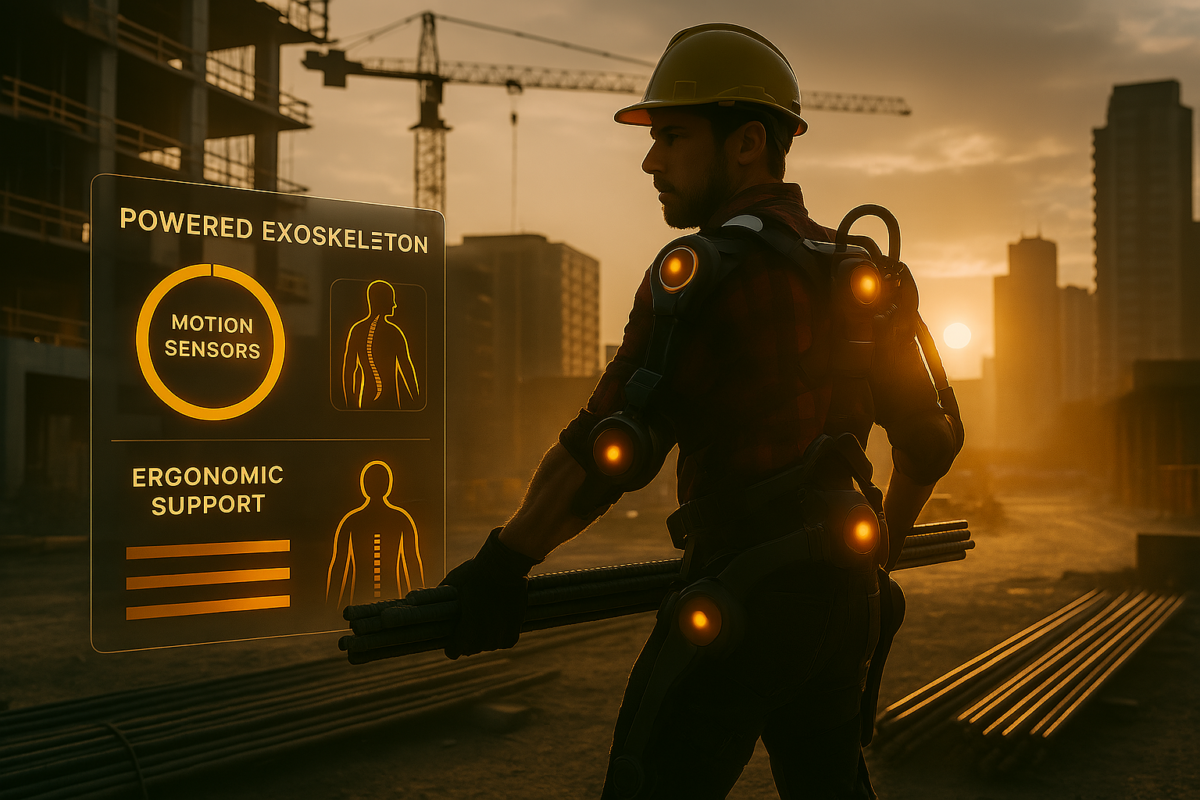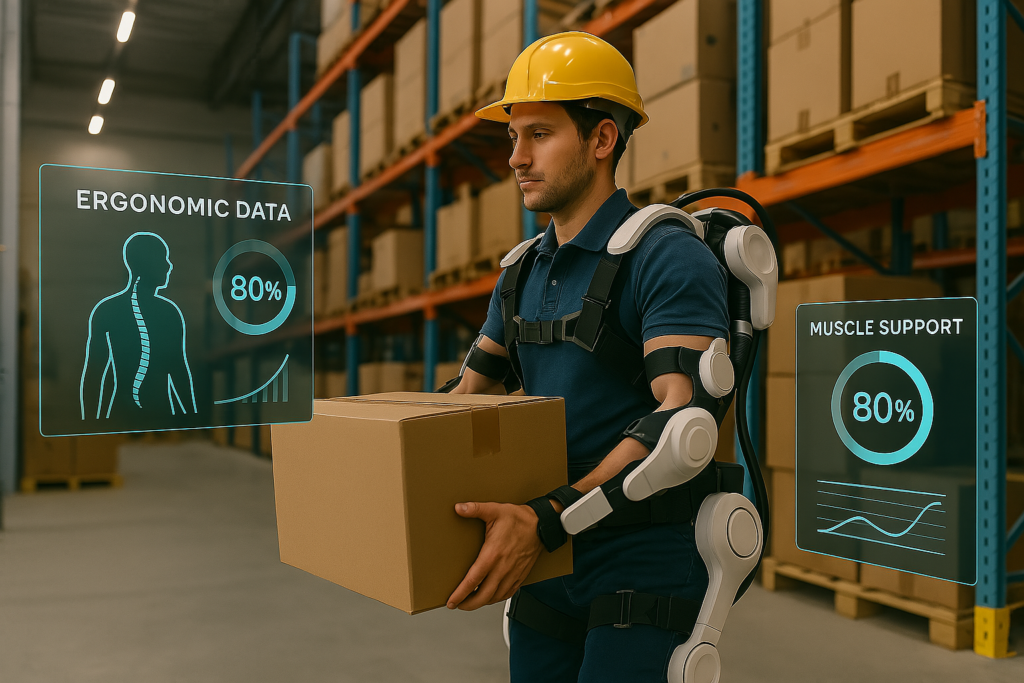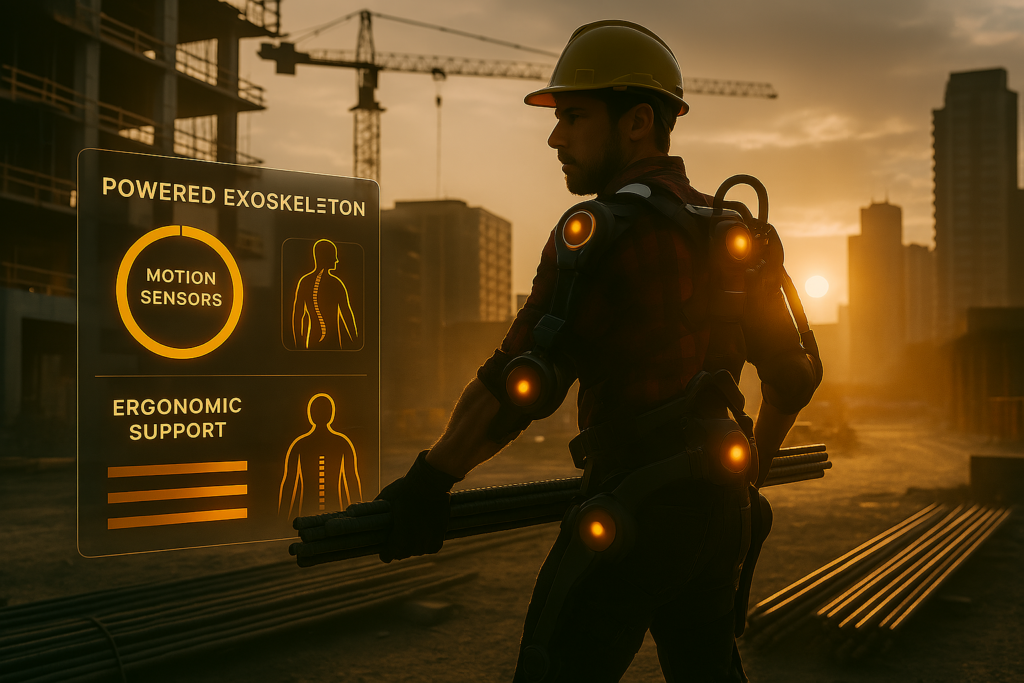Exoskeletons in Robotics: Augmenting Human Strength on the Job Site

Introduction
Lifting, bending, carrying, physically demanding tasks are part of many industries. Over time, these repetitive movements can lead to fatigue, injuries, and lost productivity. But what if workers had wearable machines that could absorb the strain, enhance strength, and reduce injury risk? Enter robotic exoskeletons, a rising star in the robotics world.
These wearable devices are helping people do more with less effort, transforming both how work gets done and how long people can safely do it.
What Are Robotic Exoskeletons?
Robotic exoskeletons are wearable machines designed to assist or amplify human motion. Built with lightweight materials and powered actuators or spring-based mechanics, they support arms, backs, and legs.
There are two major types:
- Passive exoskeletons: Use mechanical support without motors (often spring-assisted)
- Powered exoskeletons: Use motors or hydraulics for active movement and lifting
By synchronizing with the user’s movements, they reduce the strain on muscles and joints, particularly in industries like manufacturing, logistics, and construction.
Industrial Applications on the Rise
1. Construction and Heavy Lifting
On construction sites, exoskeletons assist with:
- Lifting heavy materials
- Overhead drilling
- Concrete handling
- Manual carrying
Workers experience less fatigue and greater control, even after long shifts. This improves both safety and output.
2. Warehouse and Logistics
In fast-paced logistics hubs, exoskeletons reduce injury risks from lifting and bending. Workers who wear these devices move faster, make fewer errors, and recover quicker between tasks.
Additionally, these suits help prevent chronic issues like lower back pain or shoulder injuries, leading causes of warehouse absenteeism.

3. Healthcare and Rehabilitation
Some exoskeletons are designed for patients, not just workers. In hospitals and rehab centers, powered suits help individuals relearn walking, rebuild leg strength, or restore upper limb motion.
These systems provide real-time feedback, encouraging proper posture and safe movement. This leads to faster recovery and better long-term outcomes.
ALSO READ
4. Automotive Manufacturing
Assembly-line workers often repeat the same overhead or crouching movements thousands of times. Wearable robotics reduce strain and improve endurance, making precision work safer and more sustainable.
Major companies like Ford and Hyundai have already introduced exosuits to support their assembly crews.
How Robotic Exoskeletons Improve Safety and Efficiency
These suits don’t just prevent injuries, they also:
- Improve lifting force without added strain
- Stabilize movement and reduce wobble
- Correct posture through smart alignment
- Support real-time alerts if unsafe motion is detected
- Allow people to work longer without overexertion
Companies report fewer worker’s compensation claims, reduced fatigue-related errors, and improved morale after integrating wearable robotics.

The Technology Behind Exosuits
Smart robotic exoskeletons use sensors and AI to monitor:
- Muscle exertion
- Spinal posture
- Joint angles
- Step frequency
- Load distribution
Some systems even include Bluetooth connectivity to sync with workplace dashboards. Supervisors can monitor team health metrics and optimize task assignments in real time.
Challenges and Considerations
While the benefits are promising, a few challenges remain:
- Cost barriers: Some powered exosuits can cost thousands of dollars
- User adaptation: Learning to move with assistance takes time
- Battery limitations: Power units may need frequent recharging
- Maintenance needs: Mechanical parts require regular checks
- Sizing issues: Fit and comfort vary across body types
That said, the pace of innovation is lowering costs and improving usability every year.
Future Outlook: Where Exoskeletons Are Headed
In the coming years, expect to see:
- AI-driven motion prediction: Allowing smoother, faster support
- Lighter materials: Making suits more wearable for long periods
- Wireless energy charging: To extend battery life
- Data integration with wearables: Like smart helmets or wristbands
- Use in elder care: Helping caregivers lift and support patients safely
These trends will move robotic exoskeletons from niche tech to everyday equipment across industries.
Conclusion
Robotic exoskeletons are transforming how physical work is performed. By supporting the human body with smart mechanics, these systems reduce injury, boost productivity, and extend careers. As costs fall and tech improves, more companies will adopt this powerful blend of human skill and robotic strength.
Ready to Explore More?
💪 Curious how wearable robotics can enhance your workplace? Download our Industrial Exoskeleton Starter Guide and explore vendor options, ROI calculators, and use cases tailored to your sector.
